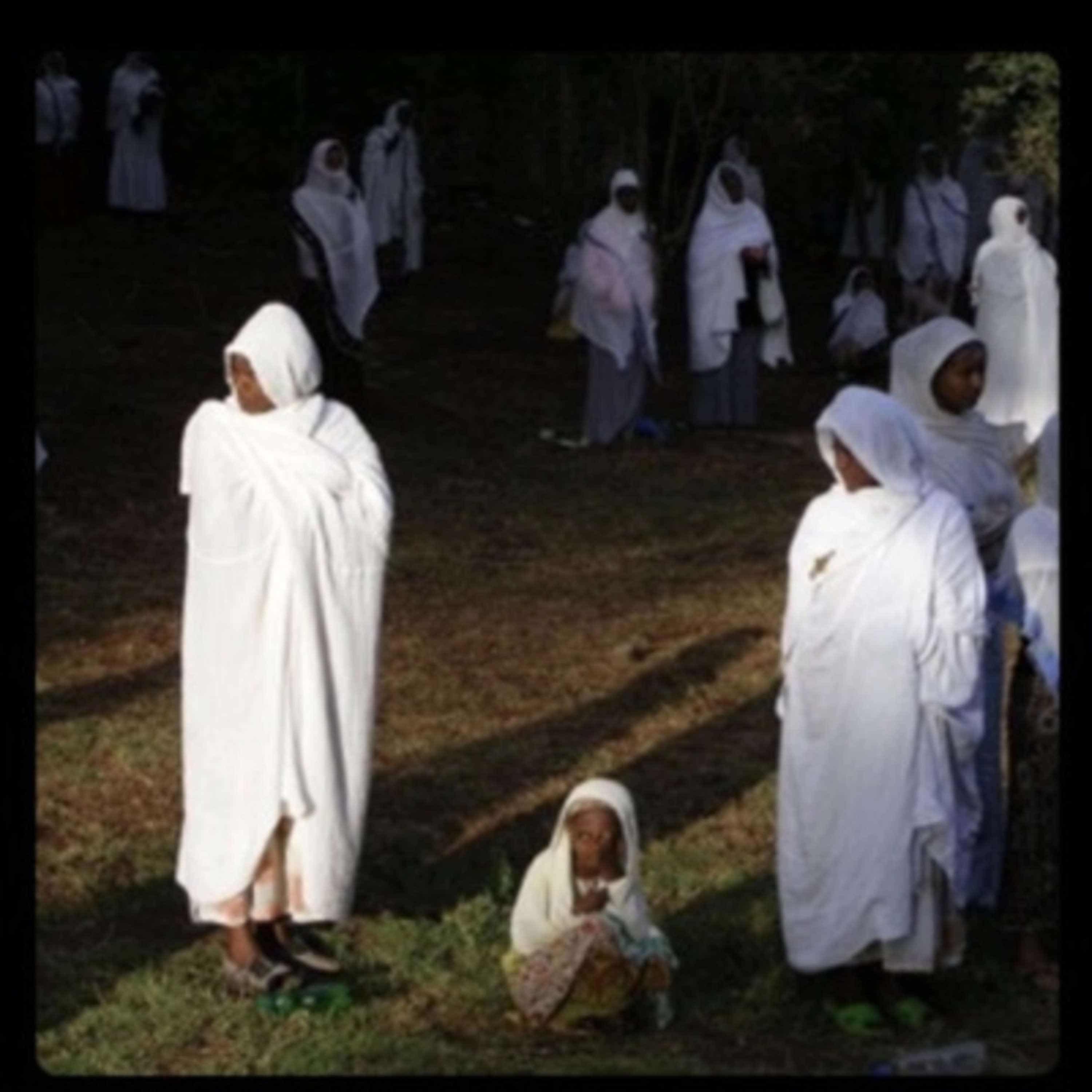Atypical and A Typical Sunday
Description
I thought it would be demonstrative to show you an atypical Sunday at Virgin Mary’s EOTC in South Central L.A., and a typical Sunday. The former has given us so much content already, and this second high-quality video from our brother in Christ nahu’senay will be our last from the atypical Sunday.
Here Dcn. zéna bluy hadees recites the Magnificat, according to the Greek Rite. In our ge’ez Rite, this prayer is one of the many compiled within a collection known as tselot ze’zewtr (ge’ez) / ye’zewtr tselot (Amharic) (prayers for always; daily prayers). It is found in the Gospel According to St. Luke, Chapter 1 Verses 46-55:
And Mary said, My soul magnifies the Lord, And my spirit rejoices in God my Savior. For he has regarded the low estate of his handmaiden: for, behold, from henceforth all generations shall call me blessed. For he that is mighty has done to me great things; and holy is his name. And his mercy is on them that fear him from generation to generation. He has showed strength with his arm; he has scattered the proud in the imagination of their hearts. He has put down the mighty from their seats, and exalted them of low degree. He has filled the hungry with good things; and the rich he has sent empty away. He has helped his servant Israel, in remembrance of his mercy; As he spoke to our fathers, to Abraham, and to his seed for ever.
It is often committed to heart in ge’ez. If you can do this fully, do so. If you cannot, do it in part. If you cannot, do it in English, or whatever language of yours is strongest. Here’s the ge’ez:
ታዐብዮ ነፍስየ ለእግዚአብሔር ወትትሐሠይ መንፈስየ በአምላኪየ ወመድኃኒየ እስመ ርእየ ሕማማ ለአመቱ ናሁ እምይእዜሰ ያስተበፅዑኒ ኵሉ ትውልድ እስመ ገብረ ሊተ ኃይለ ዐቢያተ ወቅዱስ ስሙ ወሣህሉኒ ለትውልደ ትውልድ ለእለ ይፈርህዎ ወገብረ ኃይለ በመዝራዕቱ ወዘረዎሙ ለእለ ያዐብዩ ኅሊና ልቦሙ ወነሠቶሙ ለኃያላን እመናብርቲሆሙ አዕበዮሙ ለትሑታን ወአጽገቦሙ እምበረከቱ ለርኁባን ወፈነዎሙ ዕራቆሙ ለብዑላን ወተወክፎ ለእስራኤል ቍልዔሁ ወተዘከረ ሣህሎ ዘይቤሎሙ ለአበዊነ ለአብርሃም ወለዘርዑ እስከ ለዓለም።
On a typical Sunday, like this past Christian Sabbath, Dcn. daweet ingida’werq preached in English before the great congregation, including a mixed-assembly of adults and youth, Jonathan Simmons, Esq. taught a swarm of high school and college age students in a room adjacent to but outside the sanctuary, and his beatitude abune bernabas did his thing counseling visitors whilst standing outside after the eucharistic liturgy.
Dcn. daweet told us about the Prophet Ezekiel being told to eat the scroll of the instruction of yahweh and doing so (chapter 3), and of the dry bones (chapter 37) being told likewise with slightly different language, but still doing so. Jonathan shared with us the Acts of the Apostles chapters 1 & 2, after summarizing the culmination of the Gospel According to St. John, which his class had recently completed reading aloud. The ascension, or going up into the sky, of Jesus Christ, the fiery homily of repentance from St. Peter at the third hour (9a.m.; btw we still speak this way in Amharic), and the hierarchical communal living of the apostles and their disciples make an appearance.
After my wife sang a typical spiritual song for our bishop, in ge’ez, he interpreted it for those of us present. It is rooted in the Gospel According to St. John Chapter 17 Verse 11 (LEB), “Holy Father, keep them in your name, which you have given to me, so that they may be one, just as we are.” Like Luke’s, ““Father, forgive them, for they do not know what they are doing”, and Genesis’ “be fruitful and multiply, swarm on the earth and mult
More Episodes
Raymond Silverman, Professor Emeritus of History of Art, Afroamerican, and African Studies at University of Michigan, joins me on the latest Philosophy of Art and Science to discuss the Afroasiatic art of Aksum.
Aksum Review of Books is a reader-supported publication. Free subscribers help...
Published 11/10/24
This is an audio recording of my homily from the throne of the Ethiopian Orthodox Tewahdo Church’s bishop of Washington, Oregon, and Idaho. I delivered this homily during communion, and the cameraman rightly took the camera away from the mystery of qwrban (qurban; sacrifice; communion), whilst...
Published 10/31/24
Published 10/31/24


